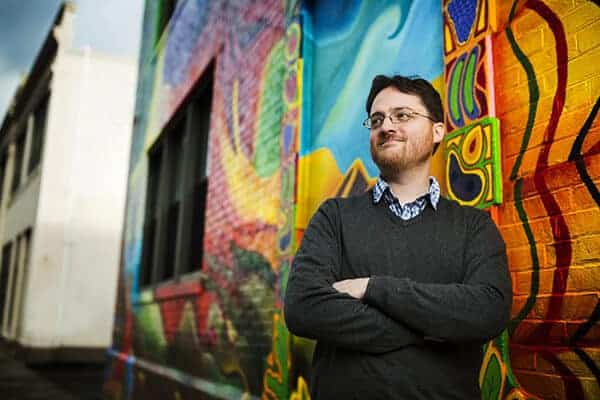What are memories made of? Do different parts of our brain light up when we perceive an event than when we remember it afterward? What role does memory play in directing our attention to specific details in our surroundings?
Cognitive neuroscientist J. Benjamin Hutchinson, who recently joined Northeastern’s faculty, is on a quest to find out. The answers could contribute to our understanding of attention deficit hyperactivity disorder, or ADHD, and other learning problems as well as lead to strategies to help people stay focused when attending to a task.
“In general, memory and attention have been studied as separate aspects of cognition,” says Hutchinson, assistant professor in the Department of Psychology, who comes to Northeastern from a postdoctoral fellowship at Princeton University. “By recognizing their interaction, I want to know: How does information from the past, in the form of memories, influence what we pay attention to in the present?”
Consider a simple example: You’re gazing into a sea of strangers. Suddenly, your eyes lock onto a familiar face. What drew you there? It wasn’t the present scene, but rather a memory. It directs your attention like a dart. “The better we understand how attention is implemented in the brain, the better we will be able treat symptoms that interfere with it, such as those that characterize ADHD,” he says.
Scanning for clues
Hutchinson’s primary tool in his research is functional magnetic resonance imaging, or fMRI, which looks at the brain in slices, front to back, like a loaf of bread, and tracks blood flow to its various parts. The nature of his research—which uses human subjects who lie in the massive machine as he observes and analyzes brain areas that light up and go dark—made Northeastern a natural fit.
“The new Interdisciplinary Science and Engineering Complex will house a brand-new fMRI machine,” he says. “It’s just one example of how the university is ambitiously expanding its research capabilities and furthering its already excellent quality of education for both undergraduate and graduate students. It is a very exciting time to be here.”
In his lab, Hutchinson will continue researching how our memory systems favor the processing of new information over old, providing insight into the ways we learn. He will also expand his exploration into the mechanisms by which memory influences attention, breaking “memory” into its various types, including “episodic” memory, which processes specific events (say, what you had for breakfast), to “semantic” memory, which processes factual information (the name of the first U.S. president).
“The data provided by fMRI enables me to look at not just the pattern of activity in the brain but also how different parts of the brain talk to each other,” he says. “At Northeastern, I hope to develop a comprehensive model describing how the signals in the brain that relate to different kinds of memory differentially impact our attention. Unraveling these relationships could add to a more integrated understanding of how we think and behave.”
If our reporting has informed or inspired you, please consider making a donation. Every contribution, no matter the size, empowers us to continue delivering accurate, engaging, and trustworthy science and medical news. Independent journalism requires time, effort, and resources—your support ensures we can keep uncovering the stories that matter most to you.
Join us in making knowledge accessible and impactful. Thank you for standing with us!

